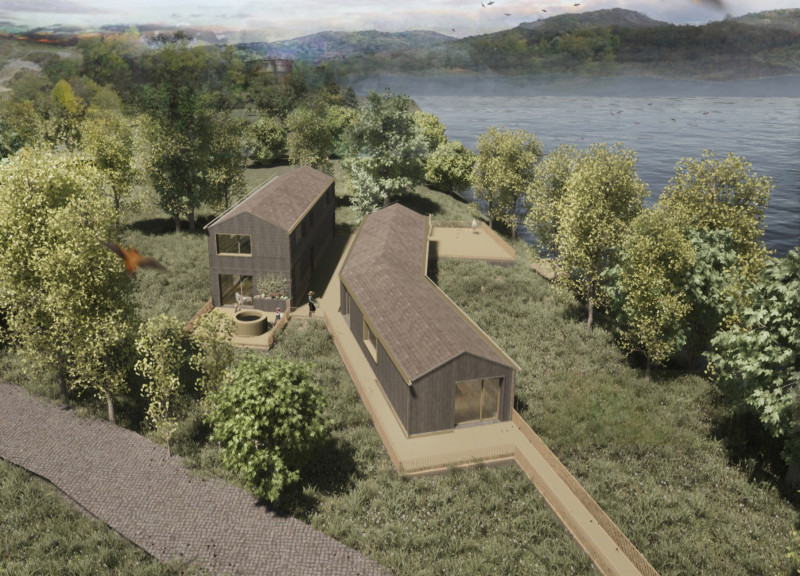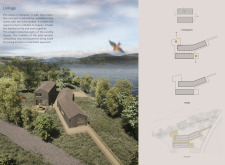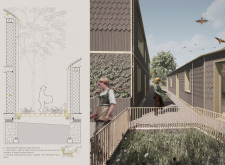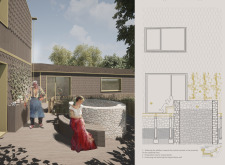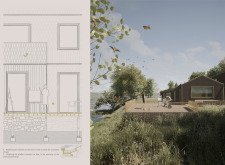5 key facts about this project
"Linkage" serves both functional and social purposes. At its core, the project is designed to facilitate interaction among community members, offering multipurpose spaces that accommodate various activities. It functions as a communal hub where families can gather, collaborate, and engage with one another. The layout of the project promotes an intuitive flow, with pedestrian pathways connecting distinct zones and encouraging exploration of the site.
Key architectural features include two primary structures with varied roof profiles that draw inspiration from traditional forms while integrating modern design principles. This duality not only enriches the aesthetic appeal but also provides practical benefits, such as effective water drainage and natural ventilation. The careful orientation of these buildings maximizes views of the landscape and enables abundant natural light, contributing to a warm and inviting atmosphere.
The project's material palette is equally intentional. Timber plays a vital role in the construction, utilized for structural support and exterior cladding, which evokes a sense of warmth and craftsmanship. Straw is integrated into the wall systems to enhance insulation, underscoring a commitment to sustainable building practices. The use of stone is significant, particularly in the preservation of an original stone well, which serves as a tangible link to the area’s heritage. Large glass panes enrich the interiors with natural light and foster a visual connection to the surroundings, while metal elements are thoughtfully incorporated, such as in the drainage systems, which not only function effectively but also add a unique decorative dimension.
The design incorporates green spaces strategically placed throughout the site, including built-in planters that encourage biodiversity. These areas not only enhance the aesthetic quality of the project but also contribute to ecological balance by providing habitats for local wildlife. Additionally, the architecture promotes sustainability through rainwater collection systems, natural ventilation, and careful site selection that preserves existing flora and fauna.
A noteworthy aspect of "Linkage" is its emphasis on community engagement. The project creates several communal areas and facilities designed for gatherings, leisure, and interaction. This design approach promotes a strong sense of community and shared identity, reflecting the values and lifestyle of the residents. The flexible use of spaces within the buildings supports a range of activities, making it possible for families and individuals to adapt the environment to their needs.
In considering the unique design approaches employed in "Linkage," one cannot overlook the seamless blend of architecture with the natural landscape. The project exemplifies a commitment to sustainable practices while fostering a strong sense of place and belonging. The integration of both traditional and modern design elements creates a rich, contextual experience that is deeply rooted in its geographical setting.
For those who wish to explore this architectural project further, reviewing the architectural plans, architectural sections, and architectural designs will provide deeper insights into the nuances and thoughtful intentions behind "Linkage." This exploration can reveal how the project not only meets the needs of its users but also contributes positively to the surrounding environment and community.


